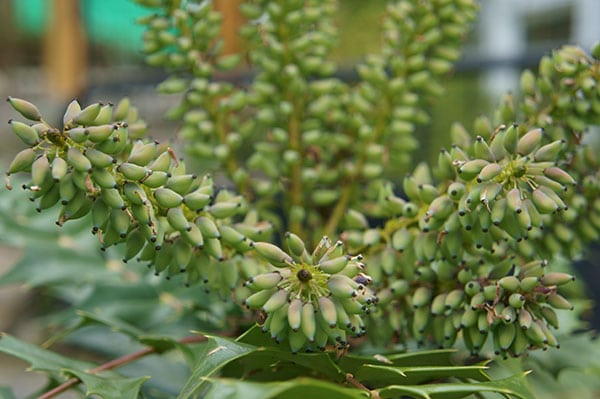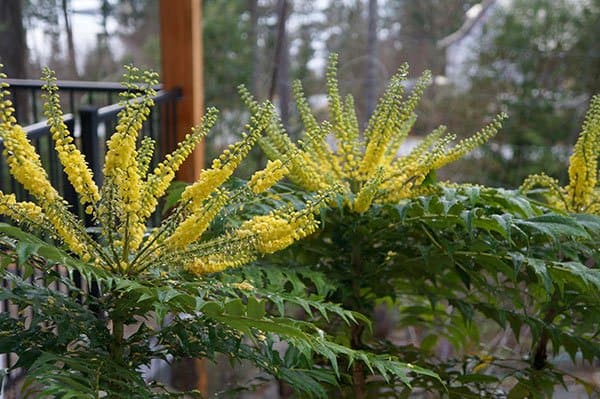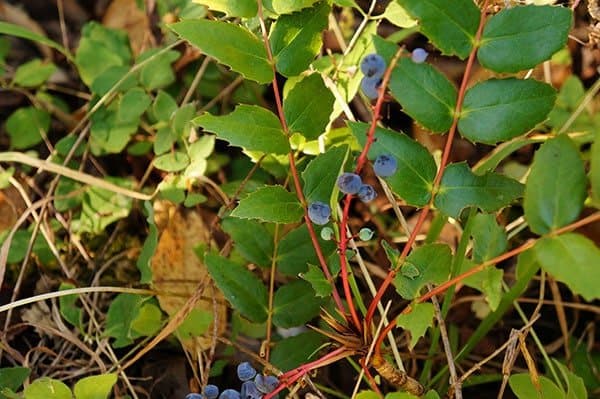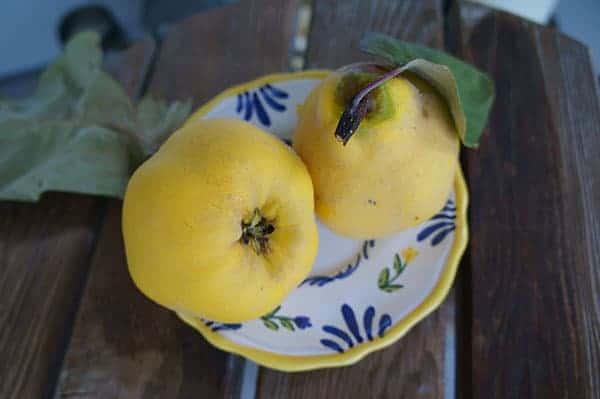Beyond our deer-proof fencing, on the upward slope leading to the entrance of our house, we have several gardens bordered by rock. My aspiration was to plant as many edibles as possible in this area, but it’s a big challenge growing food where deer roam daily, grazing and razing every palatable morsel to the ground. Here are suggestions for deer-proof shrubs, trees and plants.
I have experimented without success with Jerusalem artichokes (immediately gobbled up), zucchini and squash (picked at) and thorny black currants and gooseberries (ignored at first, then inhaled during one hungry night), but fortunately there are a few culinary plants that hold their own, even if you’re forced to garden on what has generally proven to be a deer dinner tray.
Once you’ve planted a chew-proof garden, you’ll also be rewarded in other unexpected ways. Most plants unappealing to deer are also resistant to insect pests and, once established, quite drought resistant. In short, they’re tough guys, well suited to the outlying areas of your yard where you don’t want to worry about fussing any more than you absolutely must.

Hybrid mahonia
At the back of my deer-foraged food garden, I’ve planted a small orchard of Mahonia ×media ‘Winter Sun’, umbrella-like shrubs of jagged, glossy leaves that grazers regard as unappetizing. ‘Winter Sun’, hardy to Zone 6, adds evergreen structure year round and a sunshine-like crown of yellow flowers in the middle of winter.

The smoky-blue berries that follow are seedy but edible and nice to nibble on while out in the garden. We also simmer some into a tangy, cranberry-like jelly or sauce, but leave at least half the harvest behind for birds struggling to make it through the winter. The brilliant blossoms on this perennial are also highly supportive of hummingbirds that migrate through our area during the winter.
Admittedly, when the plants are small, deer do occasionally munch a few flowers, but given a little time, mahonia will reach seven feet (2 m) or more, triumphantly outgrowing the reach of deer.

Cascade Oregon grape
Planted below our hybrid Mahonia ×media orchard is a mass of Mahonia nervosa, commonly called Cascade Oregon grape, a native plant on our property that took well to transplanting when we rescued some before installing raised beds for our kitchen garden. With lustrous leaves and grape-like waxy blue berries in May, this drought-tolerant groundcover, which grows two feet (60 cm) tall, also provides food and is a handsome, reliable groundcover. It’s hardy to Zone 5.

Quince
Considered “the fruit of the gods” throughout history because of its sumptuous scent and a flavour between that of an apple and Anjou pear, quince (Cydonia oblonga) is hardy to Zone 5 despite its Mediterranean roots. With leathery leaves and fuzzy fruit that requires cooking to make it suitable for eating in pies, stews, stuffings, desserts or preserves, quince’s properties make it the only fruit tree I’ve managed to grow in an unprotected area without deer picking it clean. In fact, so far they have not given the quince in my garden a moment’s notice or nibble.
A quince orchard can endure wet feet in winter and, once established (usually after three or four years), it needs watering only during arid late summers. Add mulch and manure prodigiously to the planting bed to encourage good fruiting and rapid growth.

I learned of quince’s almost-too-good-to-be-true stamina and sturdiness from Vancouver Island’s quince grower John Edwards, who (with his wife, Gillian) grows a large orchard of ‘Le Bourgeot’ and ‘The Champion’ quince trees on Quinceotica Farm in Yellow Point.
While deterred by neither deer nor drought, quince’s invincibility doesn’t end there. Says John, “I saw our resident black bear take an exploratory bite of a ripe quince, but only one bite — he prefers the blackberries in the fall. And we recently had a tent caterpillar explosion of biblical proportions, yet the wretched creatures seem unable to feed upon quinces.”
John forgoes pruning to allow each of his 150 quince trees to form an arched umbrella shape through the weight of their fruit, which makes them easy to pick in late September or early October. One quince tree is enough for small gardens; unlike some fruit trees, two aren’t required for cross-pollination. To encourage pollination, though, gardeners are advised to grow bee-supportive plants and erect mason bee houses.

I was told that planting loveage if that is right spelling. It is like a celery looking plant
Haven’t heard that George but it wouldn’t be surprising. Lovage is an herb that’s been said to have a scent (and taste) like a cross between celery and parsely; fortunately for people who like to grow herbs, deer tend to stay away from plants with strong scents, which might also include bee balm, chives, lavender, mint, oregano, sage, thyme rosemary. Good luck.
Hi, Here’s a note from Carol Pope about lovage:
Lovage is absolutely deer-proof: I’ve grown it where the deer roam in my garden for many years. It’s also wonderful for attracting beneficial insects (and often becomes covered in developing ladybugs 🙂
Herb fennel is another beautiful choice and very deer-proof. Both make elegant backdrops in the deer-exposed garden. Both require cutting back at the end of the season but this may need to be postponed if you find beneficial insects have moved in—as I did last fall, so I put off pruning the plants until the following March.
Was so excited to read this article, then not. ” Hardy to zone 6″? “Hardy to zone 5”? Gee whiz, many of us out here in the country, battling deer, are zone 4 at best. Would have been nice to include some suggestions for us!
Good point Gail. We’ll do a follow up with my hardy options.
Hi, Gail, I’ve checked with some of our growers in Zone 4; here are a few quick responses:
* Plant a double row of sunflowers around your plot of edibles; deer don’t penetrate the scratchy fence! (Admittedly you might then have a problem with birds…) Most of the sunflowers grown in Canada are grown in Manitoba. Here is a link to what sunflowers might be suitable: http://www.aitc.sk.ca/saskschools/sask/sunf.html
*Here’s a reference from a Manitoba site with an extensive list of deer-resistant plants generally:
http://cwf-fcf.org/en/discover-wildlife/resources/online-articles/deer-resistant-plants_resource.html
*As I’ve noted to someone else in this thread, deer tend to stay away from plants with strong scents such as herbs, which might include bee balm, chives, lavender, mint, oregano, sage, thyme rosemary.
Good luck—and if you care to, please let me know what you’ve already had success with.